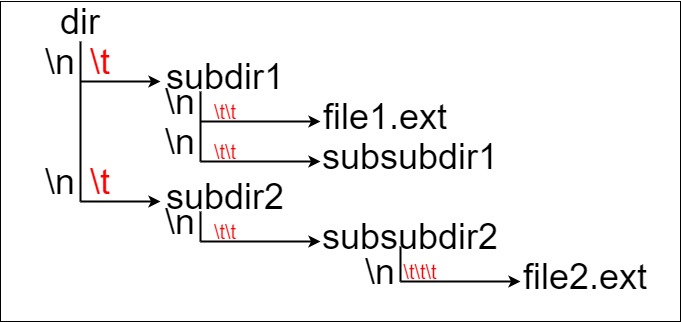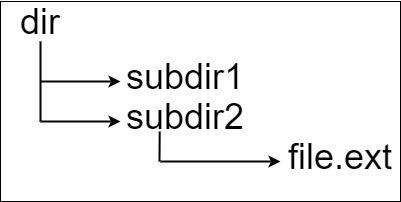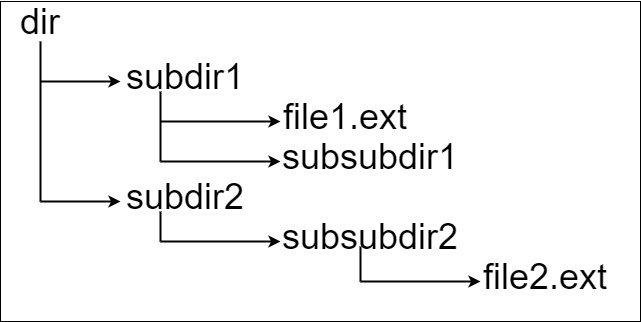| ID | Title | Difficulty | |
|---|---|---|---|
| Loading... | |||
388. Longest Absolute File Path
Problem
 Suppose we have a file system that stores both files and directories. An example of one system is represented in the following picture:
Suppose we have a file system that stores both files and directories. An example of one system is represented in the following picture:
Here, we have dir as the only directory in the root. dir contains two subdirectories, subdir1 and subdir2. subdir1 contains a file file1.ext and subdirectory subsubdir1. subdir2 contains a subdirectory subsubdir2, which contains a file file2.ext.
In text form, it looks like this (with ⟶ representing the tab character):
dir
⟶ subdir1
⟶ ⟶ file1.ext
⟶ ⟶ subsubdir1
⟶ subdir2
⟶ ⟶ subsubdir2
⟶ ⟶ ⟶ file2.ext
If we were to write this representation in code, it will look like this: “dir\n\tsubdir1\n\t\tfile1.ext\n\t\tsubsubdir1\n\tsubdir2\n\t\tsubsubdir2\n\t\t\tfile2.ext”. Note that the ‘\n’ and ‘\t’ are the new-line and tab characters.
Every file and directory has a unique absolute path in the file system, which is the order of directories that must be opened to reach the file/directory itself, all concatenated by ‘/’s. Using the above example, the absolute path to file2.ext is “dir/subdir2/subsubdir2/file2.ext”. Each directory name consists of letters, digits, and/or spaces. Each file name is of the form name.extension, where name and extension consist of letters, digits, and/or spaces.
Given a string input representing the file system in the explained format, return the length of the longest absolute path to a file in the abstracted file system. If there is no file in the system, return 0.
Example 1:

Input: input = "dir\n\tsubdir1\n\tsubdir2\n\t\tfile.ext"
Output: 20
Explanation: We have only one file, and the absolute path is "dir/subdir2/file.ext" of length 20.
Example 2:

Input: input = "dir\n\tsubdir1\n\t\tfile1.ext\n\t\tsubsubdir1\n\tsubdir2\n\t\tsubsubdir2\n\t\t\tfile2.ext"
Output: 32
Explanation: We have two files:
"dir/subdir1/file1.ext" of length 21
"dir/subdir2/subsubdir2/file2.ext" of length 32.
We return 32 since it is the longest absolute path to a file.
Example 3:
Input: input = "a"
Output: 0
Explanation: We do not have any files, just a single directory named "a".
Example 4:
Input: input = "file1.txt\nfile2.txt\nlongfile.txt"
Output: 12
Explanation: There are 3 files at the root directory.
Since the absolute path for anything at the root directory is just the name itself, the answer is "longfile.txt" with length 12.
Code
class Solution {
public int lengthLongestPath(String input) {
Stack<String> stack = new Stack<>();
int max = 0;
int currLen = 0;
for(String line : input.split("\n")) {
String[] paths = line.split("\t");
while(stack.size() >= paths.length) {
currLen -= stack.pop().length();
}
String path = paths[paths.length - 1];
stack.push(path + "/");
currLen += path.length() + 1;
if(path.indexOf(".") != -1) {
max = Math.max(max, currLen - 1);
}
}
return max;
}
}


